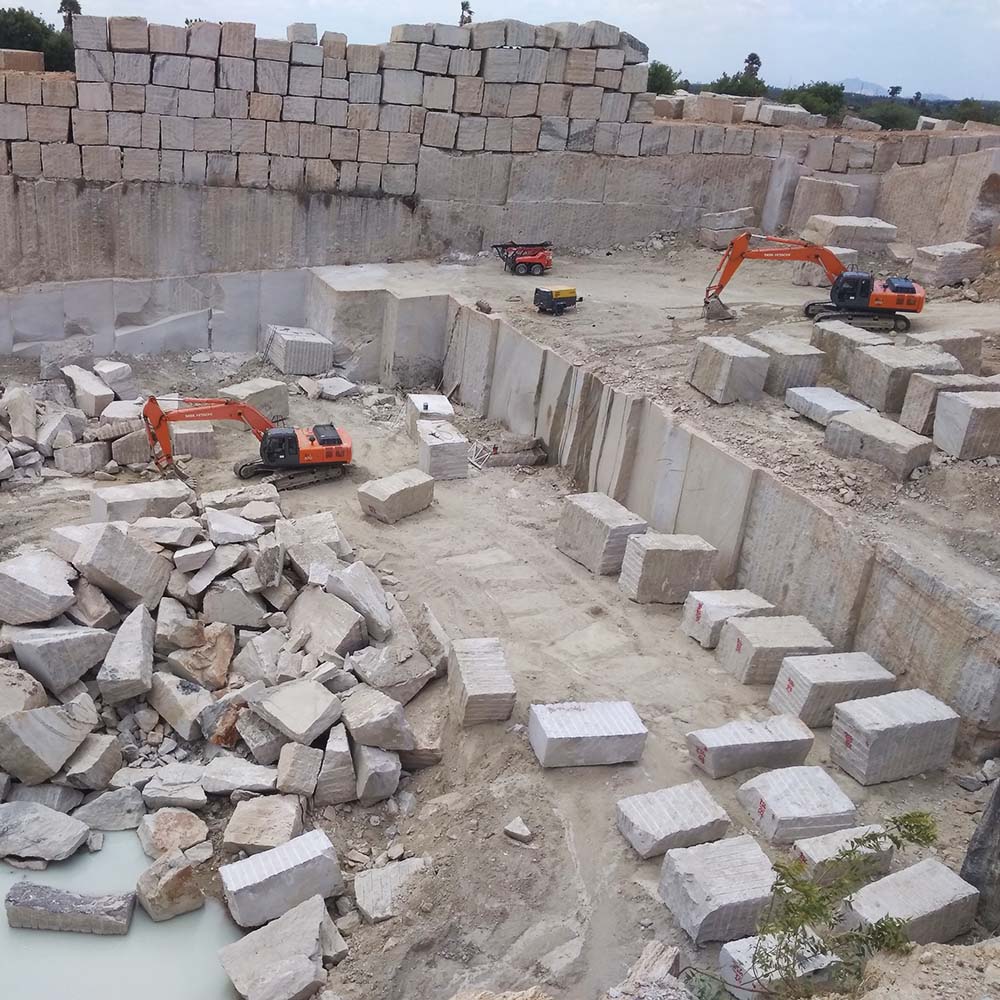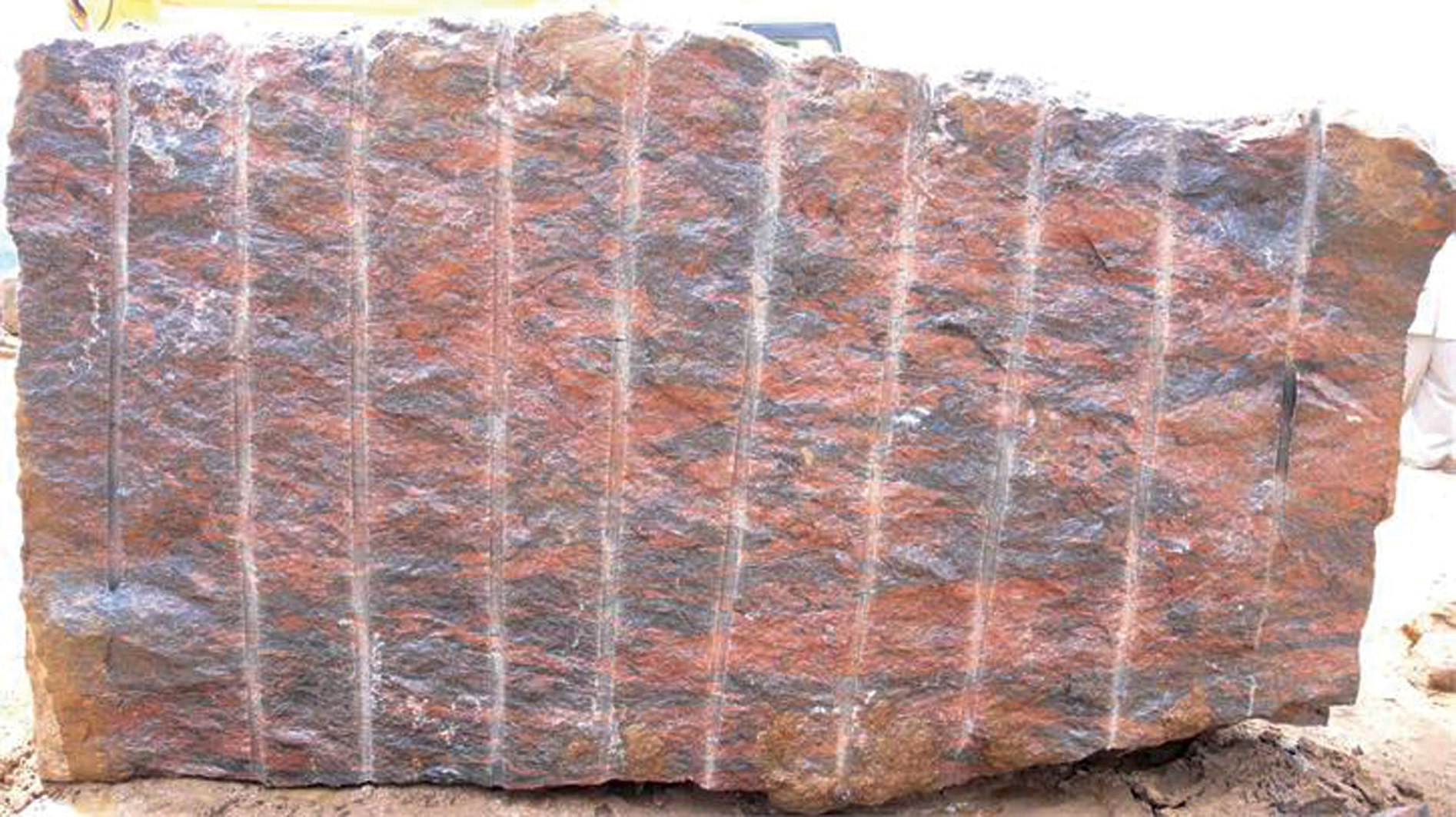Letting Loose the Charm and Durability of Granite Quarry: A Journey With Time
Granite quarries stand as testaments to both the geological wonders of our world and the enduring craftsmanship of humanity. As we peel back the layers of time and dive right into the detailed globe of granite quarrying, we discover a tale that not only showcases the charm and toughness of this stunning rock however also drops light on the extensive impact it has had on worlds past and present.

The Origins of Granite Quarrying
In the annals of background, the origins of granite quarrying can be mapped back to ancient worlds where the quest for durable building materials fueled the introduction of this timeless craft. From the magnificent structures of old Egypt to the grandiose holy places of Greece, granite has been revered for its strength, appeal, and longevity. The Egyptians, with their innovative quarrying techniques, were amongst the very first to remove granite on a huge scale, using it to construct monumental pyramids and complex sculptures that have actually endured the test of time.
As civilizations developed, so did the techniques of quarrying granite. The Romans better fine-tuned the strategies, establishing devices and machinery to essence and transport granite over huge ranges for their building jobs. The durability and aesthetic charm of granite made it a treasured product for basilicas, monoliths, and sculptures throughout the ages.
Today, the heritage of old quarrying techniques resides on, with contemporary technology boosting effectiveness while still admiring the workmanship of our forefathers. The beginnings of granite quarrying serve as a testimony to human ingenuity and the long-lasting allure of this worthy rock.
Devices and Techniques of Quarrying
Exploring the precise workmanship of granite quarrying reveals a sophisticated range of devices and strategies thoroughly developed over centuries. Quarrying granite requires specialized tools to remove the rock from the earth successfully and with accuracy. Modern quarries use diamond-wire saws, high-powered drills, and nitroglycerins to break apart the granite in a controlled way. These tools permit the extraction of large blocks of granite while lessening waste and environmental impact.
In enhancement to innovative machinery, conventional hand devices are still utilized in certain quarrying procedures to make sure delicate accuracy in drawing out the rock. Chisels, hammers, and wedges are used by competent quarry employees to separate granite blocks along all-natural cracks, a strategy that has been passed down with generations.
Moreover, strategies such as piercing upright and horizontal holes for placing feathers and wedges, along with the controlled use dynamites in tactical areas, enable quarry workers to extract granite successfully More hints while preserving the integrity of the rock. The harmony between modern-day innovation and conventional workmanship is essential to the lasting quarrying of granite for generations to find.
Evolution of Granite Quarries
The change of granite quarries with time discloses an interesting narrative of technological development and industry development. From ancient times where manual devices like chisels and hammers were made use of to draw out granite blocks, to the commercial change presenting steam-powered equipment for faster quarrying, the advancement of granite quarries has actually been noted by considerable technologies. In current decades, the development of ruby cord saws and advanced exploration modern technologies has actually transformed the extraction process, enabling a lot more accurate cuts and decreased waste of basic material.

Granite Quarrying in Modern Times
The development of granite quarrying techniques from historical reliance on handbook tools to the innovative techniques of modern-day times underscores an exceptional trip of technological technology and sustainability techniques within the industry. In modern granite quarrying, progressed equipment such as ruby cord saws, high-capacity excavators, and computerized drilling tools have actually revolutionized the extraction procedure. These tools boost effectiveness, precision, and security, enabling larger amounts of granite to be drawn out in a much shorter timeframe contrasted to traditional approaches.
In addition, modern quarrying techniques prioritize sustainability and environmental stewardship - granite quarries in south africa. Firms are progressively adopting environmentally friendly techniques like water recycling systems, dirt suppression technologies, and recovery plans for exhausted quarries. These campaigns aim to minimize the ecological impact of granite extraction, conserve natural deposits, and restore quarried landscapes to their original state
Additionally, the integration of electronic innovations like drones, GPS tracking, and 3D site link modeling has allowed quarry operators to enhance operations, improve decision-making, and make certain the sustainable monitoring of resources. By embracing development and sustainability, the granite quarrying market in modern times remains to grow while supporting environmental duty.

Protecting and Safeguarding Granite Quarries
Amidst the developing landscape of granite quarrying techniques, preservation and protection of these valuable natural websites have become paramount concerns for industry stakeholders and ecological advocates alike. As granite quarries remain to be find more information a vital source of this desired rock, it is important to take on lasting strategies that guarantee their long life and protect surrounding communities.
Preserving granite quarries entails executing efficient reclamation plans to restore the land post-extraction. granite quarries in south africa. This process includes improving the terrain, replanting indigenous vegetation, and producing environments for wild animals to grow. By recovering quarries to their all-natural state, the ecological effect can be lessened, and the elegance of these landscapes can sustain for future generations to value
Furthermore, safeguarding granite quarries needs imposing policies that govern liable quarrying methods. This includes surveillance water top quality, regulating dust emissions, and managing noise levels to reduce disturbances to the environment and neighboring communities. Joint efforts in between sector gamers, governmental bodies, and preservation teams are essential in promoting these requirements and guaranteeing the sustainable use granite quarries.
Conclusion
In conclusion, the journey via time in granite quarrying reveals the origins, devices, methods, and development of this technique. The modern-day period has brought advancements in quarrying techniques, enabling the preservation and security of these important natural sources. It is important to continue to maintain lasting techniques to guarantee the beauty and toughness of granite quarries for future generations to value.